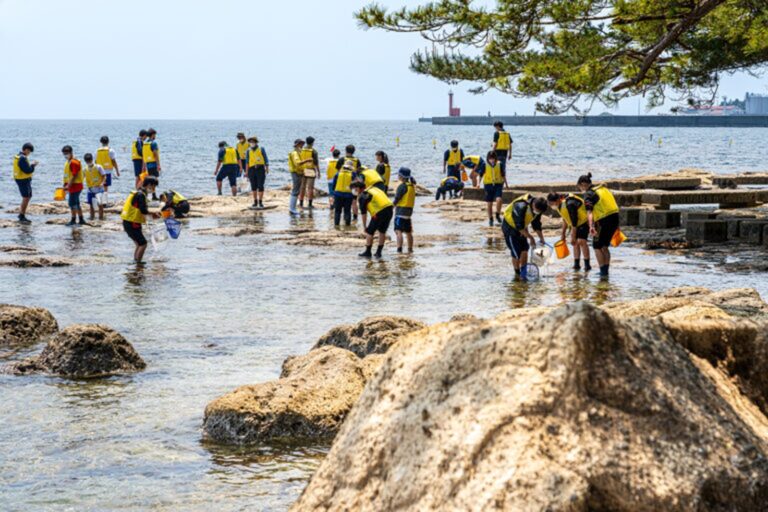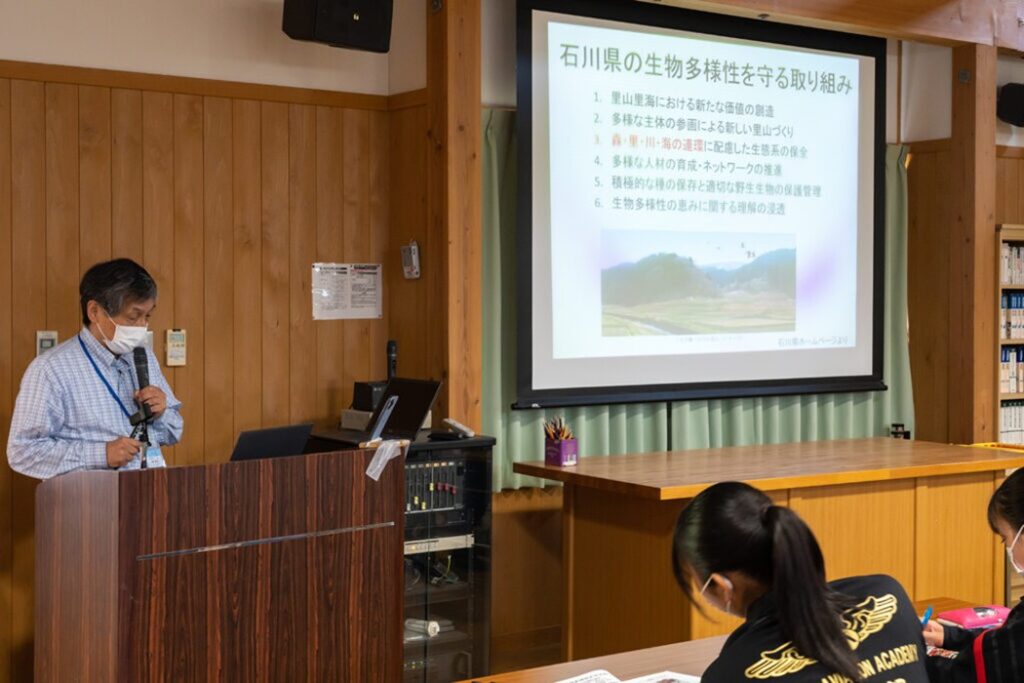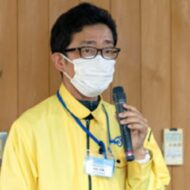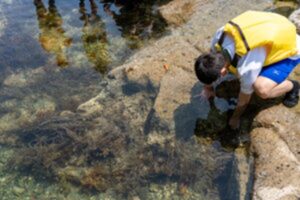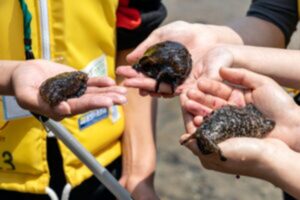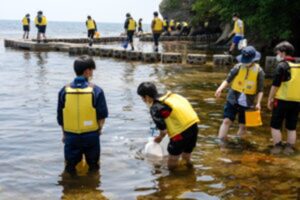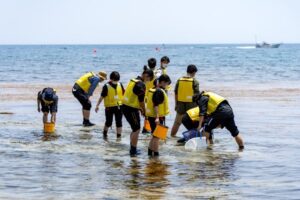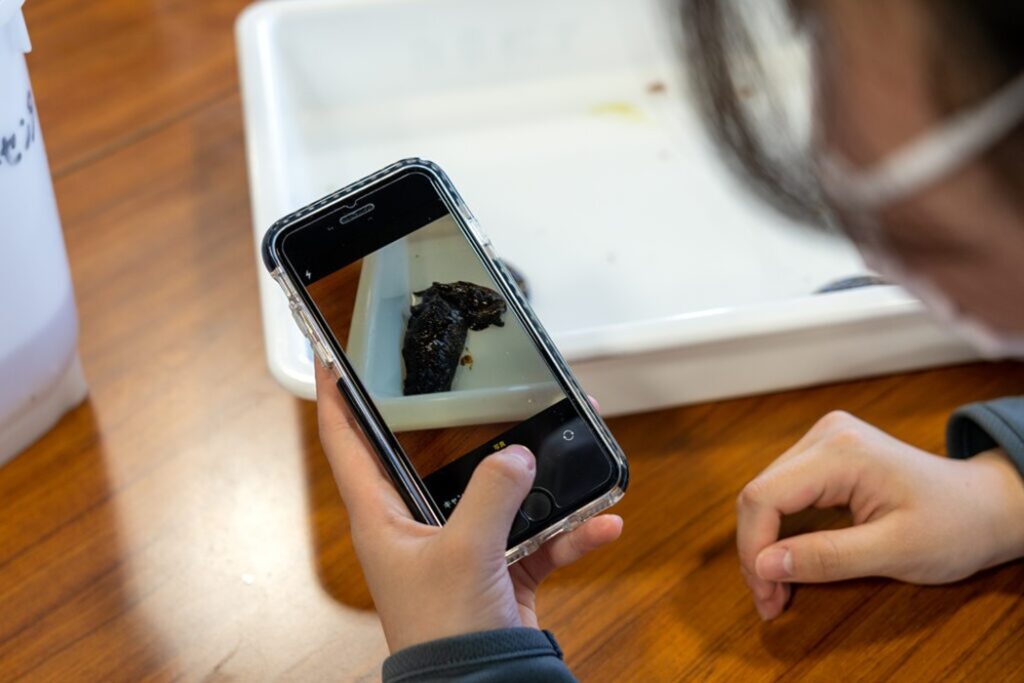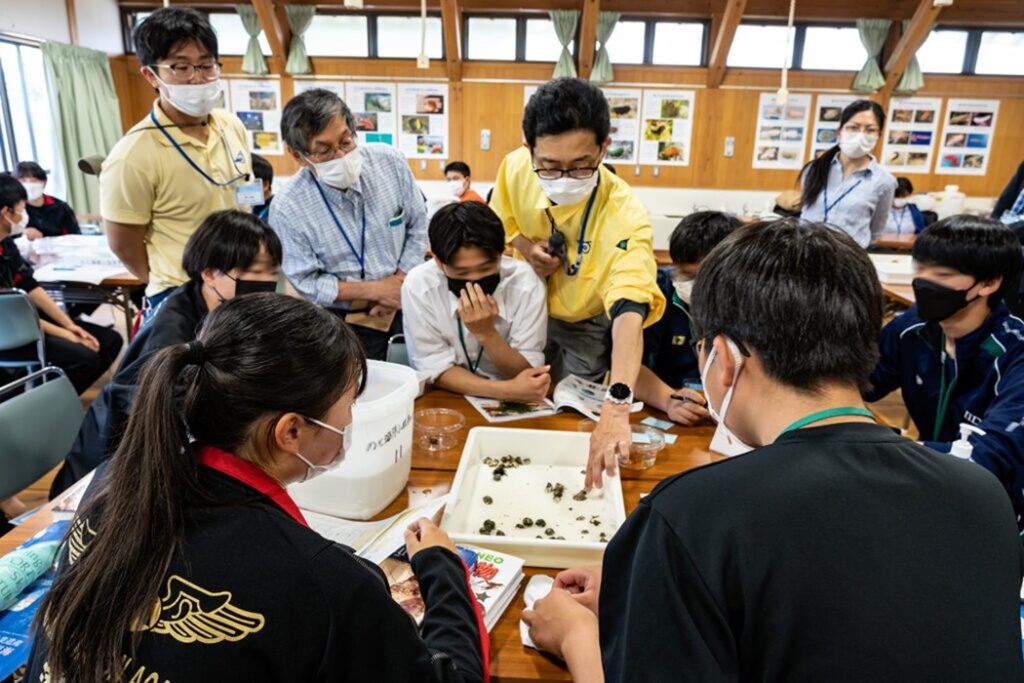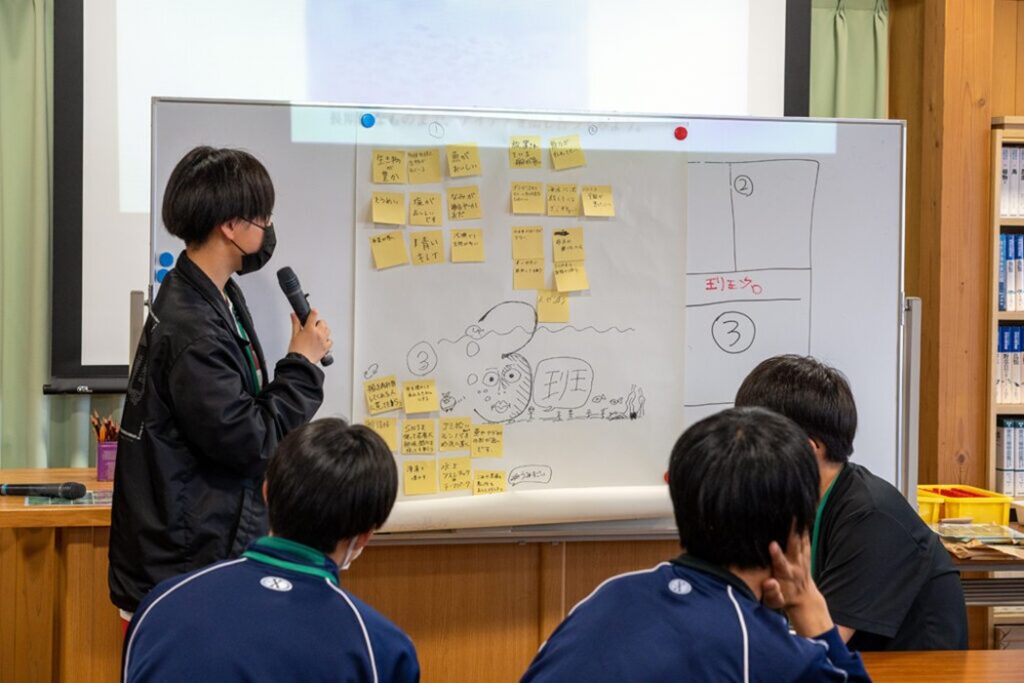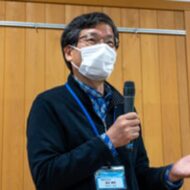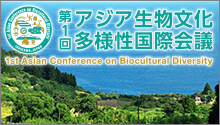In commemoration of the adoption of the international framework known as the “Convention on Biological Diversity”(CBD) on May 22, 1992, the United Nations has designated May 22 as “International Day for Biological Diversity.”
This year, we organized an event focused on biodiversity and the future of coastal waters, aimed at high school students in the Noto region. The event allowed participants to experience the richness of coastal areas and explore their connections to our daily lives. A total of 30 students from Ishikawa Prefectural Rokusei High School, Ishikawa Prefectural Noto High School, Ishikawa Prefectural Nanao High School, and Japan Aviation High School Ishikawa took part in this event.
Held at the Noto Marine Center, the event consisted of three parts: “Lecture” “Field Observation,” and “Workshop”.
1. Lecture
Red-Clawed Crabs – a connection between the forest and the sea
First, we had a lecture from Professor Seiji Yanai of Ishikawa Prefectural University’s Department of Environmental Science. He talked about biodiversity and the species living in Noto’s satoyama and satoumi environments.
To protect the biodiversity of satoumi, it’s important to consider the connections between forests, rivers, and the sea in ecosystem conservation. In his lecture, Professor Yanai explained the unique life cycle of the red-clawed crabs (Akategani, Chiromantes haematocheir), which can be found in Ishikawa Prefecture and travels between the satoyama (traditional rural landscape) and satoumi (coastal area).
Red-clawed crabs live in the sea as young zoea and return to the forest as they grow, making them an important species that illustrates the connection between the forest and the sea,” said Professor Yanai. During the nights of the August full moon and spring tide, female red-clawed crabs release their larvae (zoea) into the ocean. This in turn attracts many fish, like mullet and horse mackerel, that come to feast on the released larvae, demonstrating how crabs from the forest significantly influence marine life.
The young red clawed crab, known as megalopa, returns to land around the full moons of September and October after growing in the sea. For them to reach the forests, it’s crucial that there are plants along the riverbanks. Unfortunately, the reduction of such environments is believed to be a significant factor contributing to the decline in their population on the Noto Peninsula. He added, “The habitat suitable for red-clawed crabs also supports many other species, making it a key indicator of a healthy satoyama and satoumi”.
The Rich Seaweed Culinary Culture of Noto
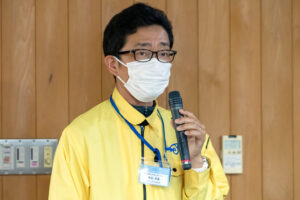
Mr. Yukimasa Higashide from the Noto Marine Center
Yukimasa Higashide from the Noto Marine Center explained about the seaweed of the Noto Peninsula. Areas where seaweed grows are known as “moba,” which serve essential functions such as providing breeding grounds for fish, feeding various marine life, purifying the ocean, and acting as natural breakwaters that calm waves. Interestingly, Ishikawa Prefecture ranks third in Japan for its moba area, following Hokkaido and Aomori. Within this, the Noto Peninsula contributes a remarkable 7.3% of the nation’s total seaweed area, making it first in the country.
The types of seaweed include edible seeweed like kombu (edible kelp), wakame (Undaria pinnatifida), and hijiki (Sargassum fusiforme), as well as others like tengusa (Gelidiaceae) that are processed for their components. Approximately 400 species of seaweed have been recorded in Ishikawa, with around 30 varieties considered safe for eating. In Noto, most seaweed is gathered from the wild, but advancements in aquaculture mean that about 90% of seaweed produced in Japan is now farmed. However, it has been noted that local harvests, which form an integral part of the food culture, have been declining.
Higashide warns, “Due to environmental changes like rising water temperatures, the types of seaweed available in the future may change.”
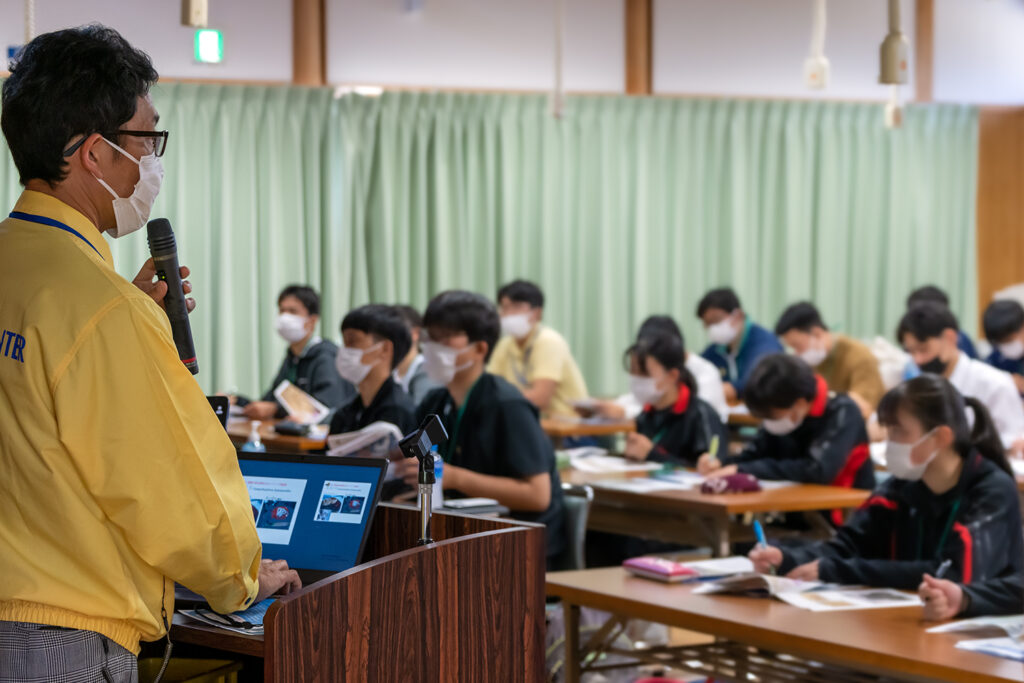
Students listening intently
Creatures Found at Tsukumo Bay and Their Habitats
Mr. Hiroaki Arakawa from the Noto Marine Center introduced the benthic animals that can be found in Tsukumo Bay, where the center is located. Unlike nektonic animals, such as fish and jellyfish that can swim freely, benthic animals, like shellfish, lack mobility and are therefore more dependent on their environment. This dependence leads to many unique structural adaptations among these creatures, which makes them particularly fascinating.
“Benthic animals have a strong relationship with their environment, so they are easily affected by changes caused by climate change or construction projects,” Arakawa explained. “Today, I’d like you to learn about the observation techniques, and I encourage you to continue your observations near your home.”
2. Field Observation at the Beach area
Next, the group moved to the beach area for a field observation. Divided into five teams, they entered the sea to observe and collect marine life. Although the high school students from Noto are familiar with the ocean, it turned out that they rarely go into the water. Many of them were initially hesitant, dipping their toes in cautiously.
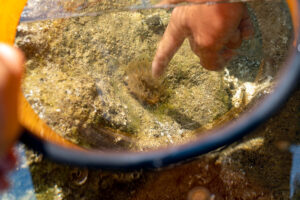 Enjoying the feel of touching a sea anemone |
||
Still, after a little while, everyone got more comfortable. They started catching sea hares and smelling them, feeling the texture of sea anemones, and exploring various sensations while enjoying their observations of the surrounding creatures.
3. Workshop
In the afternoon, the workshop began. Each group used the creature observation app “Biome” and “Google Lens,” along with field guides, to research the species names of the creatures they had collected earlier. Each group then presented their findings.
Various groups collected a wide range of marine life, including hermit crabs (Pagurus filholi), Ortmann’s hermit crabs (Paguristes ortmanni), brittle stars (Ophiura ophiura), sea snails (batillaria multiformis), purple sea urchins (Heliocidaris crassispina), and sea hares (Aplysiida).
Experts reviewed the findings, and all groups had a surprisingly high accuracy rate, even encountering some challenging questions that the specialists were unable to answer. Students got a chance to learn about common mistakes and how to tell different species apart.
By experiencing firsthand how small differences can indicate different species, they likely improved their observation skills.
Let’s consider what we can do to protect the biodiversity of satoumi
Everyone took the time to discover different creatures, research them, and deepen their understanding of these areas. Afterward, the students gathered in groups to discuss the beauty and challenges of satoumi areas, and what we can do to ensure these precious environments are preserved for future generations.
Many students shared their personal connections to satoumi, highlighting the delicious variety of fish, the plentiful seaweed, and the close bond between land and sea. It was evident that everyone held a deep appreciation for the beauty and significance of these marine ecosystems.

During the workshop, students reflected together on the beauty of satoumi and the challenges it faces.
On the other hand, the challenges we face, such as coastal litter, the decline of fishing industries, an aging population, a decrease in visitors to the sea, and issues like coastal erosion, were presented by each group with a sense of urgency, as they are visibly felt as serious problems.
Regarding potential solutions, there were immediate actions suggested, like joining beach cleanup volunteer efforts and using social media to promote the allure of satoumi and the fishing industry. Additionally, several long-term ideas emerged that we hope to see realized in the future, such as implementing indirect taxes to reduce plastic consumption, transitioning to sustainable energy sources, deploying cleaning robots to maintain our shores, prioritizing nature in development projects, and developing sea-safe biodegradable plastics.
As we move forward, it’s important to encourage more high school students to think of the allures and challenges of satoumi, as well as the actions we can take to address these issues. It’s also important that we create more opportunities for them to share their thoughts. We hope this event served as a meaningful starting point for such initiatives.
To wrap up the workshop, Tsunao Watanabe, the Director of the United Nations University Institute for the Advanced Study of Sustainability (UNU-IAS), shared his concluding thoughts. He stated, “The direction in which the world is progressing is not just about preserving nature but rather embracing a ‘nature-positive’ approach—restoring it to a better state. To build a future where all forms of life can coexist, it is important for each of you to think about what can be done moving forward propose solutions, and make them a reality, as this will undoubtedly become a great force. I would be delighted if you could continue to reflect on today’s experiences.” With these words, the event successfully came to a close.


